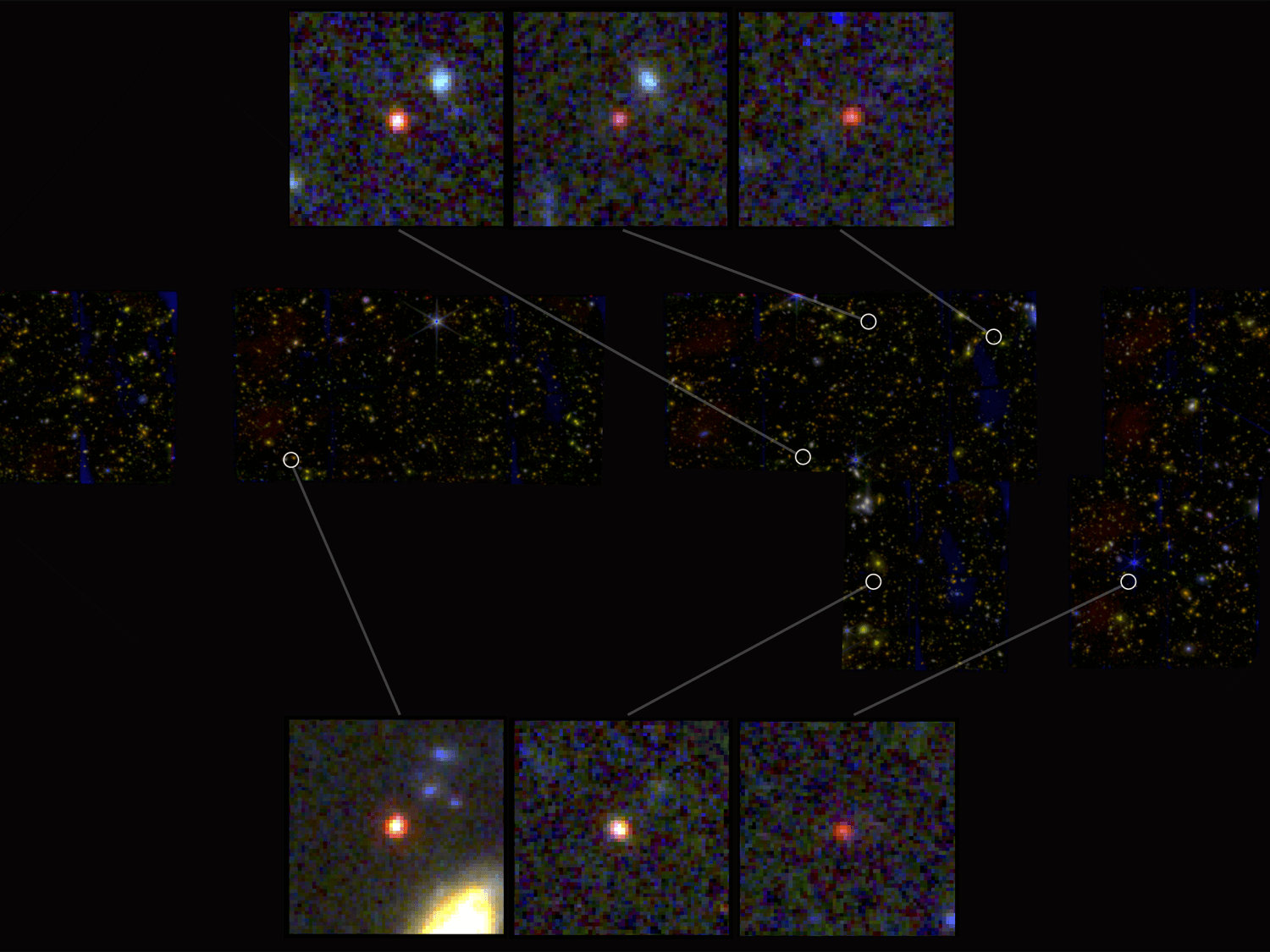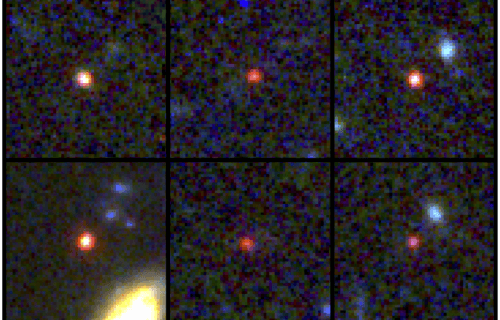UNIVERSITY PARK, Pa. — Six enormous galaxies that formed just half a billion years after the Big Bang could rewrite what astronomers know about the birth of our universe. They contain some of the first stars that lit up the cosmos and are much bigger than scientists thought was possible, according to researchers from Penn State University.
Observations by the James Webb Space Telescope (JWST) offer fresh insights into the evolution of the universe, turning previous theories on their head. They have stellar masses between 10 and 100 billion times that of our Sun.
“We expected only to find tiny, young, baby galaxies at this point in time, but we’ve discovered galaxies as mature as our own in what was previously understood to be the dawn of the universe,” explains Joel Leja, an assistant professor of astronomy and astrophysics at Penn State, in a university release.
Scientists believe one of the galaxies has as many stars as the present-day Milky Way, but it’s 30 times more compact. The first dataset from NASA’s JWST reveals objects just as mature, from around 13 billion years ago.
This was 500 to 700 million years after the Big Bang, when the universe was only three percent of its current age. The telescope carries infrared-sensing instruments capable of detecting light emitted by the most ancient stars and galaxies. Essentially, it allows scientists to see back in time roughly 13.5 billion years, near the beginning of the universe as we know it.

“This is our first glimpse back this far, so it’s important that we keep an open mind about what we are seeing,” Leja says. “While the data indicates they are likely galaxies, I think there is a real possibility that a few of these objects turn out to be obscured supermassive black holes. Regardless, the amount of mass we discovered means that the known mass in stars at this period of our universe is up to 100 times greater than we had previously thought. Even if we cut the sample in half, this is still an astounding change.”
“The revelation that massive galaxy formation began extremely early in the history of the universe upends what many of us had thought was settled science,” the Penn State astronomer continues. “We’ve been informally calling these objects ‘universe breakers’ — and they have been living up to their name so far.”
Findings force astronomers to rethink how the universe works
The study, published in the journal Nature, has implications for current computer simulations used in cosmology. Such a high amount of mass would require altering models or revising the idea galaxies started as small clouds of stars and dust that gradually grew larger. Either scenario needs a fundamental shift in our understanding of how the universe came to be.
“We looked into the very early universe for the first time and had no idea what we were going to find,” Leja says. “It turns out we found something so unexpected it actually creates problems for science. It calls the whole picture of early galaxy formation into question.”
The JWST is the largest infrared telescope in space, designed to see the genesis of the cosmos. High resolution allows it to view objects too old, distant, or faint for the Hubble Space Telescope.
“When we got the data, everyone just started diving in and these massive things popped out really fast,” the study author says. “We started doing the modeling and tried to figure out what they were, because they were so big and bright. My first thought was we had made a mistake and we would just find it and move on with our lives. But we have yet to find that mistake, despite a lot of trying.”
Scientists hope a spectrum image spectrum image will provide accurate distances and identify gases and other elements to create a clearer of picture.
“A spectrum will immediately tell us whether or not these things are real,” Leja concludes. “It will show us how big they are, how far away they are. What’s funny is we have all these things we hope to learn from James Webb and this was nowhere near the top of the list. We’ve found something we never thought to ask the universe — and it happened way faster than I thought, but here we are.”
South West News Service writer Mark Waghorn contributed to this report.


oh no, another drudge link. All the mouth breathers are out in full force.
Let’s see, you feel confident that the Big Bang resulted in the miracle of life vs a Holy God that created the universe and life with intelligent design and intricate detail. I think your hypothesis is without reason and requires faith far beyond the faith required in God for him to reveal himself to you. Seek him.
No, that is not what the caption read. It read they were formed about 500-800 million after the Big Bang. So that light source seen would be about 12.5 to 12.8 Billion years old or so.
Eventually we will find that the universe has no beginning, has always been and most likely will always be… the old “Steady State” theory was on the right track and simply needs some tweaking (lol). Further it’s extent is limitless, infinite. Anything else is not feasible. The idea of a “Big Bang” is pure fiction. It comes from somebody’s dumb notion that time is like a film which can be run backwards from the “now” to the beginning titles. Wrong.
I am not very smart man, but since we are looking at the light of images from 13.5 billion years ago essentially and since the universe is constantly expanding wouldnt it make sense that everything was much denser because expansion had not yet occurred? Relativity is a strange thing! LOL
Has anyone considered that we may be looking at the beginning of our own (or neighboring) galaxy since we are essentially looking back in time. With a relative rapid expansion or perhaps that is the other side of our galaxy getting pulling through a black hole and we are on the other side in a different part of the universe via the wormhole in the middle of the black hole?
Just food for thought to ponder
So the big bang for our universe is just the opposite side of the black hole caused by possibly a supernova like what we have seen in the present or past. The most difficult thing: confines my minds to prejudice in the inability that space and time is a set of variables but possibly just a couple of evolutionary tools specifically for our use to keep moving toward our unknown goal. Tasty meal for my brain, thanks.